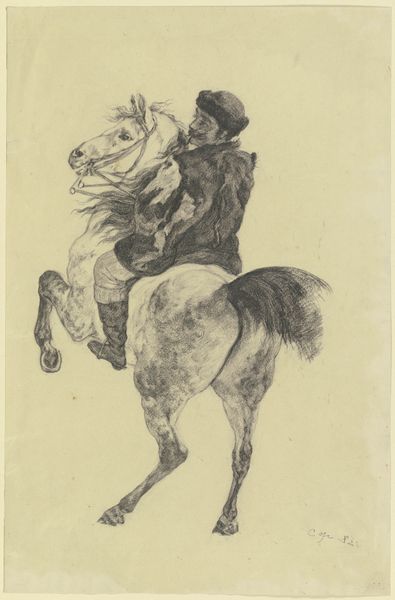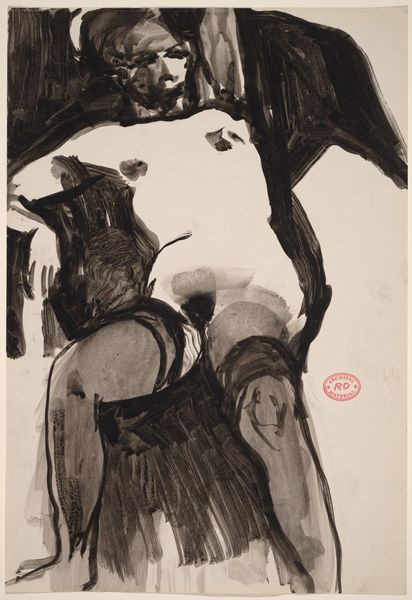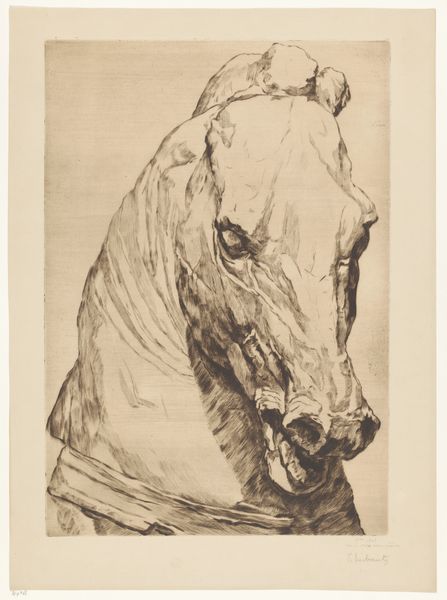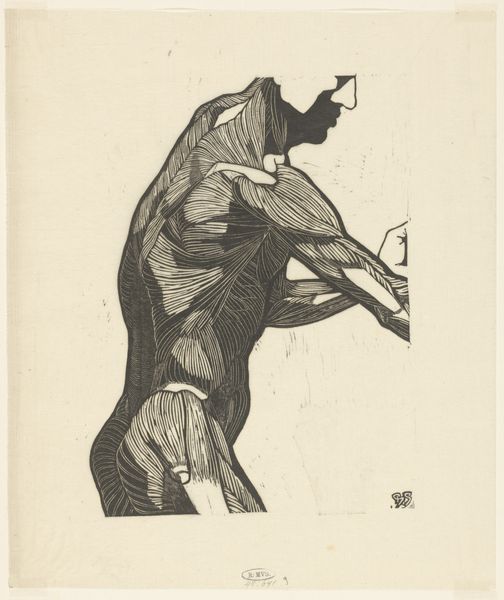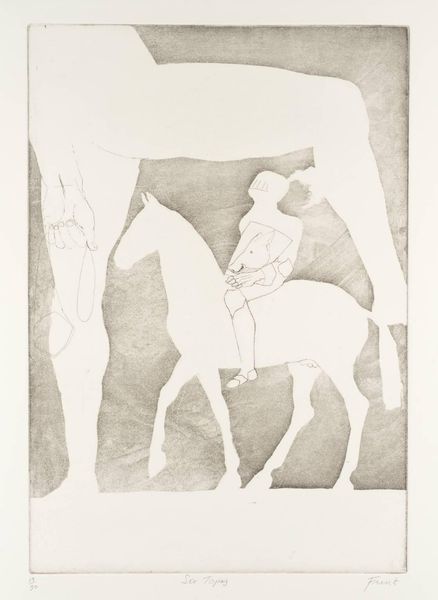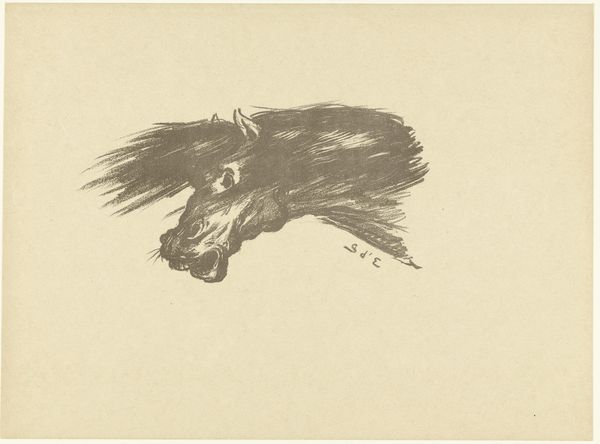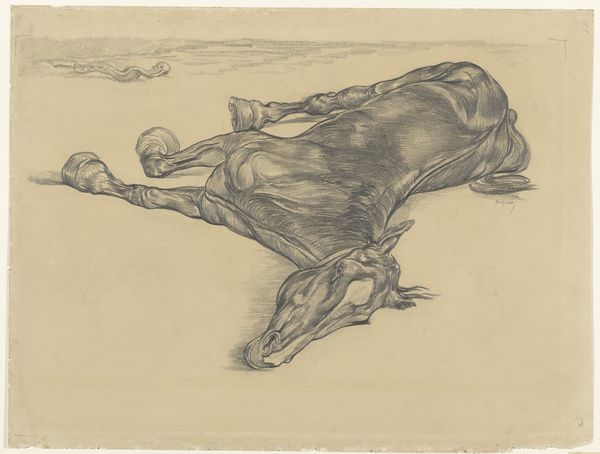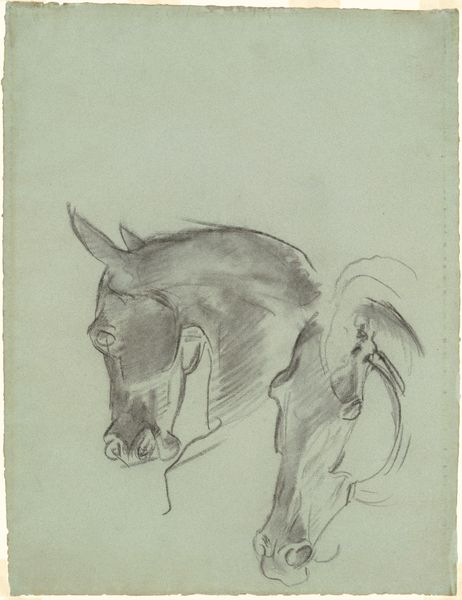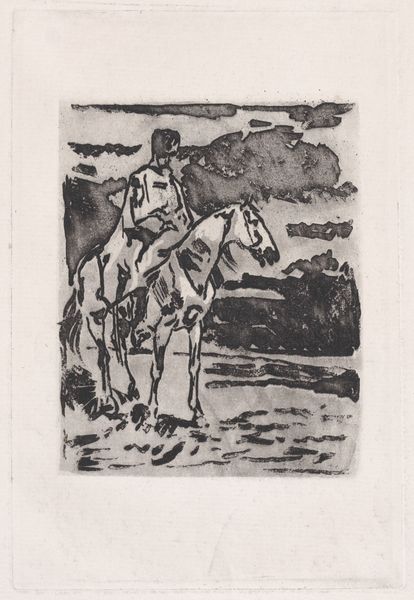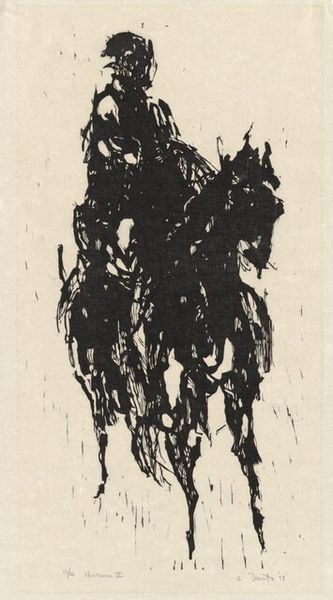
aquatint, drawing, print, etching
#
portrait
#
aquatint
#
drawing
# print
#
impressionism
#
etching
#
landscape
#
france
#
realism
Dimensions: 13 3/8 x 5 15/16 in. (33.97 x 15.08 cm) (plate)15 1/16 x 7 1/4 in. (38.26 x 18.42 cm) (sheet)
Copyright: Public Domain
Curator: This is "The Racehorse (after Manet)," an etching and aquatint by Henri-Charles Guérard, made around 1888, here at the Minneapolis Institute of Art. Editor: My immediate impression is one of movement, almost blurry—capturing the fleeting nature of the race. It's fascinating how the artist suggests speed and tension through the etching technique. Curator: The choice of materials certainly influences that impression. Guérard, known for his printmaking, likely chose etching and aquatint to emulate the tonal nuances he admired in Manet’s paintings. The visible lines speak volumes about labor and control. But there is more to this, it also suggests how the Impressionists' obsession with representing modern life also often left out considerations for class. Who owns racehorses? Editor: Absolutely. Considering its lineage, the artwork points to interesting questions about Impressionism. What labour enables such leisured activity? Beyond aesthetic technique, it encourages examination of production—linking subject and process. Curator: And there’s also the reproduction element; "after Manet" in the title reveals the layered authorship. The anxieties of original authorship versus imitation emerge. Can we analyze it through a feminist lens too? Considering Manet's role within the male-dominated Impressionist movement and Guérard replicating Manet, can be understood as gendered artistic hierarchies. Editor: The social context of reproduction certainly plays a role in how meaning gets made. In the era of mechanical reproduction, like lithography or printmaking, how do we conceive value in mass dissemination? There's tension between unique objecthood, a concern within high art, and the reproducibility inherent to mediums like this. Curator: Precisely. It questions the authenticity often placed on artistic genius. Rather than originality, the artwork prompts analysis of broader structures where certain works of art are celebrated. It reveals a critical relationship of imitation, labor, and socioeconomic dynamics shaping artistic practices. Editor: Engaging with Guérard’s methods lets us grasp the labour embedded within the piece itself, shifting away from sole interpretation toward engaging with making as central to value creation. Curator: Ultimately, this print urges me to question conventional art-historical assumptions when we look beyond merely replicating stylistic characteristics toward structural implications relating to labor. Editor: Seeing “The Racehorse (after Manet)” has reinforced my understanding of material’s role in both reflecting, and being complicit with, certain socioeconomic values.
Comments
minneapolisinstituteofart almost 2 years ago
⋮
The narrow format and bold outlines of this composition derive from Japanese woodblock prints, which captivated Henri-Charles Guérard in the 1880s. Guérard based his figure of a jockey on horseback on an earlier lithograph by the French artist Édouard Manet, whose print The Races (Les courses), (Mia P.86.28), found fame as an example of modern expression notable for its animated draftsmanship and unconventional treatment of the subject. Guérard married one of Manet’s students, Eva Gonzales, and later assisted in the production of Manet’s prints.
Join the conversation
Join millions of artists and users on Artera today and experience the ultimate creative platform.
